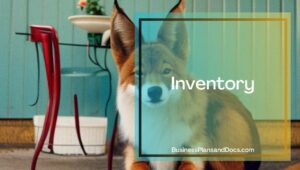According to the American Pet Products Association, Americans spent, collectively, $109.6 billion in the year 2021. Most Americans homes have at least one pet. Dogs and cats are the most common house pets, with dogs being the top most owned pet. With that being said, the most common pet expenses are food, medical supplies and veterinary care.
Are you looking to start a new pet store? There are many factors that you will need to explore, before you get started. Let’s take a look!
The average cost to start a pet store ranges from $30,000 to $175,000. Things you will need to open a pet store are: a suitable building, staffing, displays, supplies and inventory.
First, you will need a building. Whether you are looking to rent or buy, the cost of a building is going to be your greatest expense ranging between $30,000 and $175,000. Your next expense will be around $10,000 for technology: Computers, phones, point-of-sale devices and other miscellaneous required digital devices. Your third expense will range between $20,000-$60,000 for displays and retail supplies. Your final expense will range between $30,000-$70,000 to build your inventory.
Important things to consider about renting versus owning are: location, insurance and maintenance. Let’s explore why these are important.
Location

Location is crucial to the success of your store. Why? There are two important factors for location.
- Demographics – Age and income of local population
- Visibility and ease of access – Customer engagement and supply and distribution
Demographics play a role in the successful location of a retail store.Age and income are two factors you need to consider when deciding on the location of your pet store. Needs and wants are determined by income. A low income neighborhood will result in low revenue. 28% of low income households can’t afford medicine or veterinary care for their pets, resulting in 66% of pets not receiving medical care.
A well-located store is key to attracting customers and will present more revenue than a store that ill-located. Whether buying or renting, pet stores located near major highways or interstates, as well as other businesses like retail outlets and big businesses are desirable for high traffic stores. Public presence will garner more walk-in traffic. Foot traffic is imperative for success.
Supply and distribution is how stores get their products directly to their consumers. Balancing supply and demand is calculated by supply chain distribution. What is supply and distribution? Supply chain management allows stores to better cut down on their cost. Ultimately, providing a tight control over inventory, production, distribution and sales; effectively allowing stores to deliver products to their consumers.
You will need to formulate a plan for supply chain distribution that will positively affect your customer base, as well as product line. Supply and distribution will be easier to manage in a prime retail location.
How To Best Finance A Cleaning Business
Building
Most purchasing decisions are determined by the store’s visual appearance inside and out.
With all people, first impressions are everything. The design of your displays, as well as the customer’s comfort will result in repeat business. When a customer feels comfortable walking into a store, they are more likely to return. As well, your customer will appreciate memorable displays.
- Exterior – The outer aesthetics of your building is what will draw people to your store.
The building you choose to open your store will directly affect your store’s success. Your store’s identity is defined by the interior and exterior. It is essential that your customer feels comfortable shopping at your store before they get out of their vehicle.
- Interior – The layout of the store should be easy to navigate. The aisles should be adequately stocked with products and organized with the proper displays and sorted by the pet.
Lighting and color will have a direct effect on your customers. Within 90 seconds of entering a store, customers will judge whether or not they will make a purchase. Advertisements that are in color are read almost 50% more than advertisements that are in black and white. You will need to ensure your store has adequate lighting to properly display your inventory. A majority of first impressions are judged by color. If a customer finds your store aesthetics unappealing, they are more likely to not return.
Staffing
Staffing is another factor to consider. You will need staff that will compliment your desired core values for your store, as well as staff that is knowledgeable about animals and the inventory you carry. Knowledgeable staff who directly reflect your store’s core values will put the customer first, making them feel valued and appreciated.
Displays
Again, aesthetics is important when arranging your displays. Choosing the right display and executing it just right will prompt the customer to stop, explore the products and more often than not, make a purchase. Displays that are executed just right will act as marketing without the expense.
Supplies
What are supplies? Supplies are paper goods, printers, labels, label makers, computers, 2-way radios, etc.. Supplies, when managed efficiently, will reduce the store’s cost. It will improve the store’s cash flow, as well as, when connected to a point-of-sale, boost your business’s bottom line. A store does not require much to get started and keep organized.
Four Ways To Finance A Boutique
Inventory

Running a successful retail business requires strong management of inventory. This is a necessity and should be a priority when getting your store set up, ready to open and operate. Ordering the right inventory and quantities of inventory appropriately will save you time and money. Meeting customer demands by having enough inventory will ensure your customers will not go elsewhere for their pet products. As well, it will guarantee you will not end up with too much or too little inventory. An overstock of inventory will lead to cluttered displays and a loss of profit.
Before you get started, the first thing you should do is set up your office. You do not need a storefront for this; your office and be at your home. This is where you will begin your research: which products are popular and which are not, finding the right suppliers to purchase quality products. This is also where you will start the planning process: budgeting, locating a realestate agent, deciding on whether to have a building or an online store, designing your layout, map out your marketing strategy, planning your grand opening and more. As well, this is where you will launch your support network for your business.
To help you get started, it is recommended that you hire an attorney, as well as an accountant and a graphic designer to design your website where you will not only promote, but sell your products, too.
It is recommended that you start out small to begin with and expand your business and storefront as you grow. That includes starting out with as few employees as possible.
Pet stores are rewarding, but can be daunting, Here are some pros and cons of starting a pet store. Saving the best (positive) for last, let’s start with some cons first and ending with some pros.
Cons
- High cost of startup – Storefront: rent or mortgage and inventory are costly.
- Competitive Market – There major pet supply retail chains: Pet Smart, Petco to name a couple, as well as local mom and pop pet supply shops. With the major retail chains and the mom and pop stores, the market is saturated.
Pros
- Sharing your passion – Your passion for animals will be reflected by the quality of your products: toys, apparel, even the different types of foods you carry.
- Growing industry – People who own pets and pet spending are on the rise. Pets have been proven to be essential to the healing of the sick, calming to mentally ill and emotionally demanding people. People with pets want happy pets and will invest in products that will encourage happy healthy pets.
- Good money – Pet products and services (veterinary care) yield a high profit margin. Pet owners will spend, if not more, the same amount of money for medical care for their pet as they would themselves.
Four Ways Mobile App Startups Make Money
Frequently Asked Questions

- What products do pet stores carry?
Pet stores carry a variety of supplies such as toys, clothes, bedding, food: dry and can, dental care, medical supplies and much more.
- Do I need to carry organic foods?
With better health and fad dieting on the rise, most pet stores carry organic foods. Due to the high cost of organic pet foods, not all pet stores do. It is recommended that pet stores carry an assortment of organic pet foods to meet different dietary needs for cats and dogs, as well as other common household pets.
- Do I need to have a veterinary clinic in my pet store?
Most pet stores have in-house vet clinics, but not all do. It is recommended that you do have an in-house vet clinic. In doing so, you will garner more foot traffic with a vet clinic than you would without one.
To learn more on how to plan your own pet store business click here!
Please note that the contents of this blog are for informational and entertainment purposes only and should not be construed as legal advice. Any action taken based on the information provided in this blog is solely at your own risk. Additionally, all images used in this blog are generated under the CC0 license of Creative Commons, which means they are free to use for any purpose without attribution.

About the author. A lifetime of Entrepreneurship.
Hi! My name is Shawn and I am a happy individual who happens to be an entrepreneur. I have owned several types of businesses in my life from a coffee shop (link here http://archives.starbulletin.com/2003/05/18/business/index.html) to an import and export business to an online review business plus a few more and now I create online resources for those interested in starting new ventures. It’s demanding work but I love it. I do it for those passionate about their business and their goals. That’s why when I meet new business owner, I see myself. I know how hard the struggle is to obtain and retain clients, finding good employees and making sure everything works together all while trying to stay competitive.

